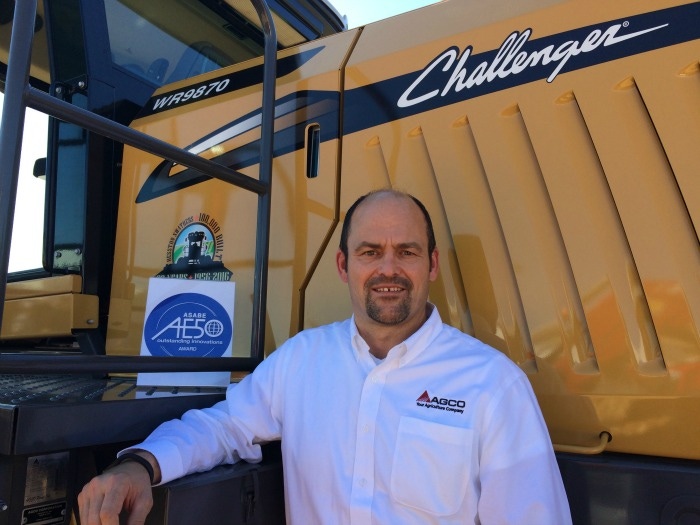February 18, 2016

David Webster, Director, Regional Sales at Agco, has been with the company long enough to remember when the Rogator and SpraCoupe brands were acquired and transitioning to all self-propelled application equipment in the Challenger brand. During that time he has had to master the technologies that go into self-propelled sprayers, which is no easy task considering they are the vehicles that ushered in the concept of variable-rate application.
We asked Webster to draw on that background, along with his equal expertise in high-horsepower tractors, and provide a look at where variable rate application and other machinery technologies such as telemetry are headed.
We’re hearing a lot about the acronym API. What does it mean?
It stands for Application Programming Interface. It is an information exchange method that enables information to be shared between applications. Agco has an open approach, which means we allow, with AGCO’s approval and consideration to privacy and other rules, independent developers to use our APIs to connect with other data and applications in ways that help our customers improve productivity and efficiency. We are allowing our APIs and the equipment data to add value to equipment operators, owners and dealers more quickly than ever. It is about creating a pipeline for information to flow back and forth, and in order to do that, the data has to be consistent and delivered in the same format.
What’s an example?
With an API, information coming off of a Raven Viper variable rate controller, for example, can be viewed right alongside machinery information from our AgCommand telemetry platform. So the customer can combine machine information and application information on one consolidated view in various farm management softwares and dashboards. Starting in 2013, we put AgCommand on our application equipment as standard so that we could facilitate collecting that machine data for the operator.
Why is having this data important?
I tell people to think about “collecting data” as the first step into “management by the data.” Compare it to how we use yield monitors and yield maps. Yield maps allow you to identify issues and make decisions on how to correct those issues, but first you need to collect the data. You can think of machine data in the same way.
One of the biggest issues in the agriculture industry is human capital. What if you could make a machinery operator, through machine efficiencies, be 10, 15, or 20 percent more productive? Having data lets you see what is going on and what you need to change to be more productive. Machinery dealers will be able to help identify those opportunities, much as an agronomist can help with yield data.
Can you walk us through a performance issue?
Let’s say you have an operator who is applying chemical at 17 mph and is sitting idle for 20% of time while waiting for the machine to be tendered. Can he instead operate at 12 mph and still be tendered when he needs to but use 15% less fuel while getting exactly the same amount of work done? So by dropping the speed to 12 mph, he can increase fuel efficiency, maybe improve the reliability of the machine, and improve the job he is doing. Or maybe you have multiple operators and you are noticing some differences between them in machine efficiencies. Are there best practices to be shared between operators? You can identify those practices, but not without first having the data.
So telemetry allows for that?
Yes. When we talk about telemetry, it is all about gathering the data and sending it someplace where it can be analyzed.
Where might telemetry take us next?
We will get to the point where every vehicle is connected. Having that internet connectivity on vehicles gives the owner remote access to real-time data and the ability to make real-time decisions. The owner could manage this on his own, or have his dealer help, through Fuse Connected Services. With access to real-time data, the analysis of what is going on in the field can be done offsite on a server that is performing calculations. By doing analysis in real-time, machine adjustments can be made in real-time.
What types of adjustments?
It will come to where everything is looked at. For example, even germination across a field is pretty important, right? Today many growers plant seed at the same depth even though field conditions are variable. Should the depth that a seed is planted in the ground change as the soil conditions or the moisture content varies across a field so that we ultimately get even germination? If we can discern differences in soil temperature, should growers then change the seed depth or maybe change the seed variety?
So, the next step might be to automate adjustments?
Yes, so today many growers are treating the whole field the same. But what if you were able to measure compaction across the field as you go and let those real-time measurements drive the adjustments? What if your planter could take readings and measure compaction as you plant, and the readings could guide your tillage work in the fall? Or maybe there is way to measure compaction as you are harvesting the field and use those readings to adjust your tillage implements. Those are the kinds of machinery adjustments that could be automated by having access to real-time information.
About the Author(s)
You May Also Like




